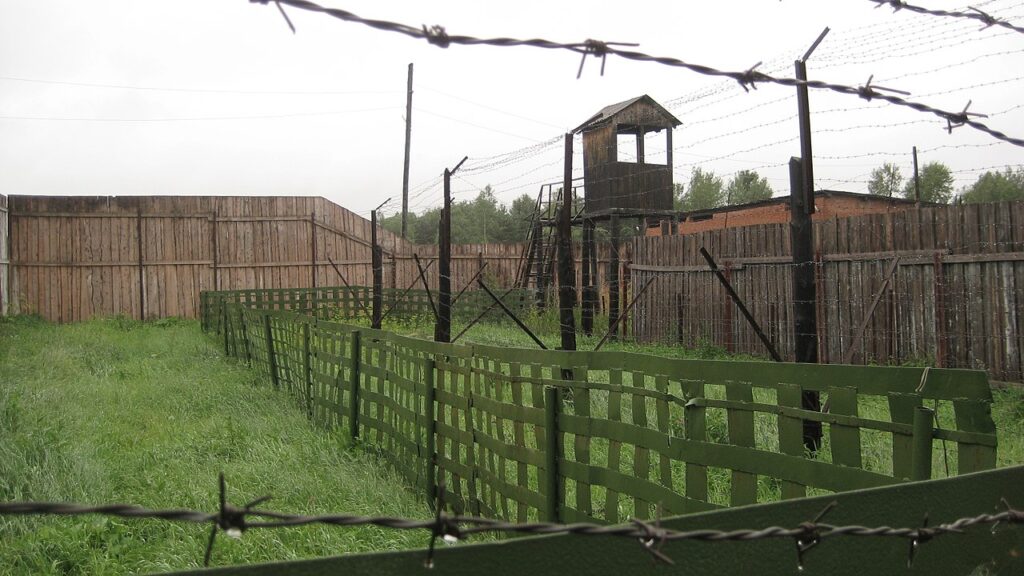Nicolas Welt, "Cannibal Island: Stalin's Unknown Gulag" Summary and Comments
The Island of Cannibalism: Stalin's Unknown Gulag, written by Nicolas Wert and translated by Takao Negishi, was published by Misuzu Shobo in 2019.
Here is a quick overview of the book.
The incident occurred in early spring 1933, when 6,000 people from Moscow and Leningrad were transported and dumped without clothes on the uninhabited island of Nazino in the Obi River in Western Siberia.
It was in 1929 that Stalin launched his "revolution from above" (eradication of the rich peasant class, collectivization of agriculture, and primary heavy industrialization). As a result, Ukraine, a breadbasket country, was plagued by famine. Peasants poured into the cities in droves, and crime increased dramatically in the cities. In the early 1930s, the secret police decided to cleanse the cities of former wealthy farmers and "socially harmful elements" under the guise of "cleaning up the big cities," and more than 130,000 people (in 1933) were forcibly relocated to Western Siberia.
The 6,000 people on Nazino Island were a mere mustard seed of the total number of victims sent to Siberia. However, the author learned the whole story of the forced migration policy from the documents he unearthed related to the "incident"-from the formulation of the "grand plan," to the chaos caused by the poorly executed long-distance transfer, to the fate of those who were sent there.
Vert, a leading French historian of the Soviet Union, has produced a groundbreaking study of the facts in a straightforward manner - and through this "microhistory," we will see the realities of Stalin's reign of terror, the Gulag archipelago, the secret police, and even the Soviet bureaucracy.
AmazonProducts Page.

The book highlights one of the tragedies that intentionally starved millions of people to death during the Great Purge of 1933.
I was surprised when I started reading the book, but at the beginning of the book, there are suddenly shocking descriptions.
There was a watchman on the island named Kostya Venilov. He was a young man. He had a thing for a certain beautiful girl who was brought to him. So he protected her.
One day, he asked one of his friends to protect Kanoujyo because he was going away for a while. The fellow who was asked to protect Kano-jyo was outnumbered and had no way to do so.
The ...... daughter was tied to a poplar tree, her breasts and muscles were cut off, and every part that could be eaten was ...... devoured by the hungry.
When Kostya came back, Kanoujyo was still breathing. He tried to save her, but died of blood loss. The man had no luck.
This is the kind of thing that was happening here. Walking around the island, I found human flesh that had been cut up by a burrower, wrapped in rags and draped over the branches of a tree.
Misuzu Shobo, The Island of Cannibalism: Stalin's Unknown Gulag, written by Nicolas Werth and translated by Takao Negishi, p2-3.
Some line breaks have been made.
The book tells the story of how such starvation could have occurred to the point of cannibalism, and why it has become so unregulated and lawless.
The author concludes the book by stating
The "Cannibal Island" event is an exceptionally well-documented example of forced displacement compared to many others. What does this case teach us?
First, it reveals how bloody it was to set out to realize utopia. It was a tremendous project of social engineering, a bureaucratic and police program aimed at "cleaning" or "purifying" the city by forcibly transferring "socially harmful class dropouts" from certain Soviet regions, especially cities, to Siberia's "waste disposal plants.
It also gives us an understanding of the function of the "special migration" system, which is still largely unknown and is considered the second glag. This system developed and proliferated in parallel with the labor camp system for a quarter of a century.
The Nazino incident, which illustrates the environment of extreme violence that covered the Soviet "Far East" in the early 1930s, is an eloquent testament to what happened in a remote and generally uncontrollable region of the Soviet Union and the violence that raged there.
In the end, the Nazino Affair was an excellent laboratory for anthropological observation of a human group in an extreme situation. It was the result of an unmistakable process of barbarization, and as a result, it became corrupted and overstepped its bounds.
Misuzu Shobo, The Island of Cannibalism: Stalin's Unknown Gulag, written by Nicolas Werth and translated by Takao Negishi, p. 155.
The book shows how ad hoc and sloppy Stalin's mass transfer and starvation programs were.
The bureaucrats in Moscow send their unreasonable demands to Siberia. The Siberian bureaucrats repeatedly warn that such a plan is practically impossible, but the central government refuses to agree to their demands.
They do not try to grasp the reality of Siberia at all, and impose everything on Siberia with the attitude that all they want is to be able to transport the people there.
The result, as expected, was chaos at the site, and countless people were left in the middle of nowhere with no food or even clothing.
In such an environment, they will surely die. But there is nothing that can be done. The Soviet leadership in Moscow does not care what happens to them.
The purges of the Stalin era were so large in scale that the number of victims was in the millions. In such huge numbers, individual deaths are not often mentioned.
This book is based on newly available research material following the collapse of the Soviet Union. Incidents that were once buried in the dark corners of history are now being brought to light.
At the same time, the translator made an interesting point in his afterword.
But with Putin in power, access to Soviet-era documents has been restricted as contrary to the national interest - Russia's past should be glorified. To put it condescendingly, a lid should be lifted on the stink. He who controls the past can control the future. In Russia, there has been a positive reevaluation of Stalin in textbook writing.
Misuzu Shobo, The Island of Cannibalism: Stalin's Unknown Gulag, written by Nicolas Werth and translated by Takao Negishi, p. 181
In reading books related to Stalin, it has come up many times that Stalin is still held in high esteem among Russians today, and I wonder if this is because of the circumstances described above. Especially by Shinji Yokote.Stalin: The Real Life of an 'Outrageous Dictator'."The situation in Russia was pointed out in the following section.
I don't know exactly what it is, but I think the words of this postscript make a very important point. And,
He who controls the past can control the future."
We must never forget these words. That is why we need to study our history.
The book is quite shocking, but it gives an insight into what was going on at the scene of the mass murder, the interactions between Moscow and Siberian bureaucrats, and the sloppy planning.
And above all, what happens to human beings in a situation of desperate hunger.
The book is full of very important insights not only into Russia, but also into human history. I highly recommend it.
The above is "Cannibalism Island: Stalin's Unknown Gulag," the reality of the Soviet Union's disastrous starvation policy in which cannibalism was rampant.
Next Article.
Click here to read the previous article.
Click here for a list of Stalin-related articles. There are 14 articles in total.
Related Articles





































